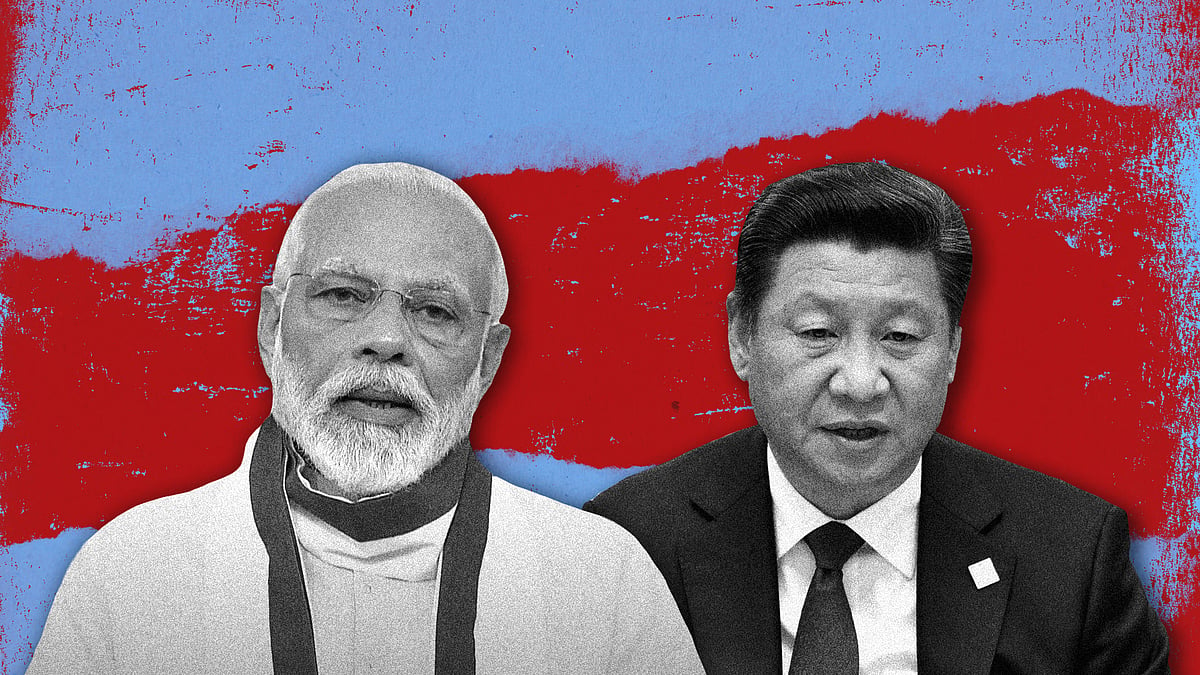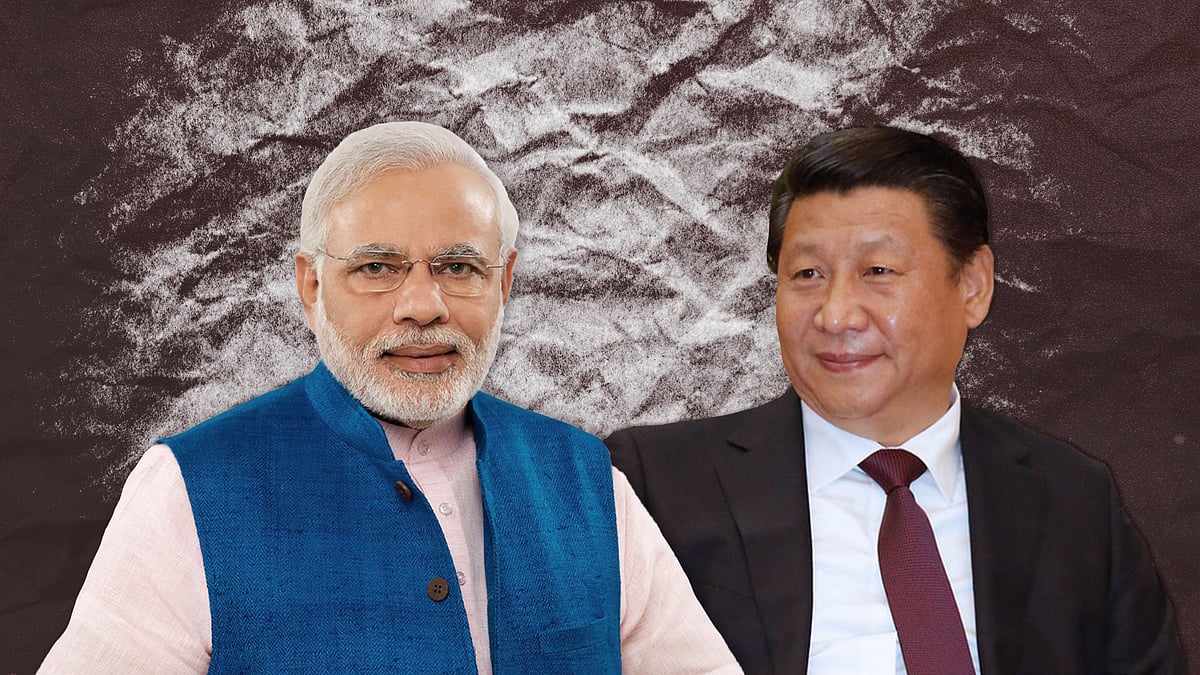Why China won’t reveal its death toll or give up territorial claims in Ladakh
Beijing fears domestic backlash if it's seen to have lost against an inferior military power like India.
In April 2001, People’s Liberation Army fighter pilot Wang Wei’s J-8II jet crashed into the South China sea as he tried to chase a US EP-3E surveillance plane during a reconnaissance mission near Hainan Island. Wang was assumed to be dead following the mid-air collision as he could not eject in time. His body was never recovered, but China honoured his heroism by conferring him with the title “Guardian of Territorial Airspace and Waters” and putting his photo on the front pages of the state media. His death is commemorated annually on social media through his pilot ID number, 81192.
This week, the PLA suffered another set of casualties — considered to be the first at least since the border clashes with Vietnam in 1989 — in a violent confrontation with Indian troops in the Western Theatre Command in Tibet, after refusing to disengage and dismantle structures as previously agreed. In contrast to Wang’s tale, however, China has been unwilling to even disclose how many of its soldiers died in the skirmish.
A source close to the PLA told the South China Morning Post “that Beijing was ‘very sensitive’ about military casualties, saying all numbers had to be approved by President Xi Jinping, who heads the Central Military Commission, before being released”. Speculation about the number of deaths and injuries of PLA forces has varied from five to 35 and 40, but official confirmation has not been forthcoming. Though, in a rare move, China publicly acknowledged the casualties on the same day.
The Indian Army’s confirmation and statement with details on the scuffle — along with names and photos of the 20 soldiers killed in the ambush — has spiked interest among the Chinese people to learn more about the clash and the casualties on their side, even as the state attempts to control the narrative with limited information. The China-India border conflict was among the top trending topics on social media platform Sina Weibo with over one billion views daily on June 17 and 18.
Hu Xijin, the editor of Global Times, a tabloid supported by the Chinese Communist Party's (CCP) People's Daily newspaper, uploaded a video on Weibo to pay tribute to the PLA soldiers, Xijin appealed to netizens to trust “our government and the PLA’s ability to deal with border issues” and to not listen to any rumours from abroad regarding the number of casualties.

The comment section below the post reveals a glimpse of how the Chinese netizens — fed on the narrative of state propaganda and shielded from independent news sources — were absorbing the news.
User Aze Z520 commented: “Even if the number of people who sacrificed for the country is not announced, let the people of the country feel cold. We don’t know the name of the martyr. It's sad!” Another user, Godel’s Conjecture, questioned: “Why did the Indian side publish the casualty information for the first time, but our side concealed it?’’ Multiple accounts like these are inquiring how many PLA soldiers have died in the scuffle and asking the government to release details of the toll on the Chinese side.
It is unlikely that the details will be revealed anytime soon. (The PLA infamously underreported the 1962 Sino-India war casualties — 722 soldiers killed and 1,697 wounded — only to partly reveal the figures in 1994.) Not only because the regime is authoritarian with no respect for transparency, but also because the deaths have shocked the average Chinese citizen.
Global Times editor Xijin in his tweet has said China was not releasing the numbers as “goodwill” towards India, to avoid stoking public mood. But in reality, the casualties on China’s side is likely to provoke backlash and widespread anger at a time when Xi’s leadership has come under increasing criticism and is facing domestic pressure, according to China experts in India.
In the Chinese imagination, India is not a threat nor a challenge to its rising influence, said Jabin Jacob, an associate professor at the Shiv Nadar University, Noida. There is a conscious attempt to downplay India as a strong challenger to China in Asia and it is often projected as a backward and a weak country.
In May, when the first visuals of the bloody brawl in Ladakh emerged on Weibo, a user posting the video noted that the Chinese media does not report such news because China usually wins conflicts with India. A few days later, foreign minister Wang Yi addressed a two-hour-long annual press conference on China's diplomacy, covering issues from straining ties with the US, relations with Korea, Europe, strategic ally Pakistan, and even Afghanistan, but made no mention of India even as Chinese and Indian troops were involved in a standoff.
When a narrative has been painstakingly built that India does not figure in the larger gameplan of China and it has no military or economic capacity to hurt China, the death of even a single PLA soldier is damaging to its posturing as a superior military power, experts say.
“It is completely unacceptable for them and raises the obvious question that on one hand, China talks about fighting the big enemy America, and it can’t handle a smaller country like India. If the Indians are announcing casualties, then why are we not?’’ explained Jabin, inferring that the Chinese Communist Party will soon shut down the discussion on social media.
Jayadev Ranade, a premier sinologist and a former additional secretary in the Cabinet Secretariat, told Newslaundry that the border casualties add to a growing list of grievances and criticism among the Chinese people against the leadership. This includes the death of Li Wenliange, the doctor who tried to issue the first warning about the coronavirus outbreak, the global anti-China tirade led by the US, the unceasing protests in Hong Kong over the extradition bill, and the re-election of a pro-independence government in Taiwan.
“There is a perception that Xi’s regime is fast losing its grip on realising the China dream,” Ranade said.
The China dream is a recurring theme promoted by Xi and is a part of the CCP’s double centenary commitment to its people. It has promised to build a moderately prosperous society, eradicate poverty and achieve the “rejuvenation of the great Chinese nation” which will realise the complete reunification of lost territories by 2021, the centenary year of the CCP. It also promises becoming “a world power with pioneering global influence” — in other words, to outrank the US by 2049, the centenary year of the establishment of the People’s Republic of China.
Since May, China has reasserted claims on the Galwan valley in Ladakh via state media reports and official statements, rebuked by India’s Ministry of External Affairs as “exaggerated and untenable”. These claims are not new. China considers Ladakh, Nepal, Sikkim, Bhutan and Arunachal Pradesh as its five fingers, part of its cultural claims and sovereign land. It has reiterated that Ladakh is known on its side as Little Tibet as it shares common cultural, language and religious traits with the Tibetan Autonomous Region. Chinese school textbooks still use the official map published in 1954 that depicts Ladakh as part of these territories along with Arunachal Pradesh and the Andaman Islands. Ranade exemplifies these claims in his book, Xi Jinping's China.
“Bullying India and laying claim on Ladakh fits into the pattern of China dream,” said Ranade, who heads the Centre for China Analysis and Strategy, a think tank in Delhi. “It will justify to its people that they are recovering territories that were lost through the imposition of unequal treaties by imperialist powers.” To appease domestically, Beijing could double down on its approach of deception and deceit, misconstrue historical facts, and change the status quo by occupying Indian territory.
However, Ranade said, in doing so, China will be faced with a difficult choice and a risk that the Xi leadership may not be ready for. For a country with the world's second-largest military, having a defence budget of $178.6 billion, a battle draw or a loss will be a damning outcome.
In recent years, China’s planning on conflict or clash has focused on keeping it as “localised in nature, using overwhelming firepower which will give a swift victory at the end.” But on the LAC, where the topography of the theatre is treacherous and India has an upper hand in mountain warfare with operational experience, the conflict, if it happens, Ranade mused, will be “protracted and bloody, on multiple fronts with no clear victor.”
According to him, the planned ambush during peacetime has destroyed confidence, eroded trust in the relationship, and brought pressure on the Modi government to act. “There is no ambiguity that India is preparing for a force buildup,” he said. “China now faces a difficult choice, either pull back its forces and engage in diplomatic negotiations or get ready for a showdown where it’s victory is uncertain.”
Jabin too contended that Beijing’s belligerent behaviour was not unexpected when it is facing nationalism pressure at home. The Indian sinologists had predicted an escalation in the nature and scale of transgressions on the LAC post the Doklam standoff in 2017. For now, some disengagement may happen in the contested areas of Ladakh, but India can expect multiple incidents in other sectors along the LAC simultaneously, Jabin said adding that this will keep the LAC, like the Line of Control, hotter and reckoning that the impact of border tensions will adversely transfer on other areas of geopolitics and economic ties.
Sana Hashmi, a scholar and the author of China's Approach Towards Territorial Disputes: Lessons and Prospects, thinks the boundary dispute will not be resolved anytime soon. But nevertheless, Hashmi said, India should use the crisis to put it in the centrestage of its relation with China. In the 1960s and ‘90s, China resolved its boundary disputes with 12 East Asian and Central Asian countries, even if it meant losing parts of territory to smaller nations in return for their unyielding support and goodwill. China is India’s largest trading partner and both are interdependent for trading and manufacturing needs.
Even then, Hashmi explained, it has been unwilling to resolve differing border claims as “it offers Beijing a ready element to exert pressure whenever it wants.” “Keeping New Delhi preoccupied with an unsettled border also incurs heavy economic and military costs. In the long term, all these factors add as a deterrent to India’s rise as a regional power.”
Hashmi said China was consolidating its territorial gains in Ladakh — over the years, it has occupied over 640 km of land through intrusions and salami-slicing strategy — and is unlikely to get bogged down with the ongoing escalation. It will also be difficult to make it give up the new positions it has occupied in Galwan, Pangong Tso and Gogra near Hot Springs all in the Ladakh sector.
“The deaths of our soldiers cannot be justified as per previous understandings in border agreements,” she said, adding that it was time for India to change its approach on China, which envisaged moving on beyond the unresolved boundary dispute to develop and expand bilateral ties. “Border issues cannot be kept on the backburner any longer.”
Update: A previous version of this story incorrectly included Jabin Jacob's name as "Jacob Jabin". The PLA revealed, not revised, its 1962 war casualties in 1994. This has been changed.
***
The media must be free and fair, uninfluenced by corporate or state interests. That's why you, the public, need to pay to keep news free. Support independent media by subscribing to Newslaundry today.
 Can India confront China the way China confronted the Soviet Union?
Can India confront China the way China confronted the Soviet Union?
 Confused about the India-China conflict in Ladakh? Read this
Confused about the India-China conflict in Ladakh? Read this
